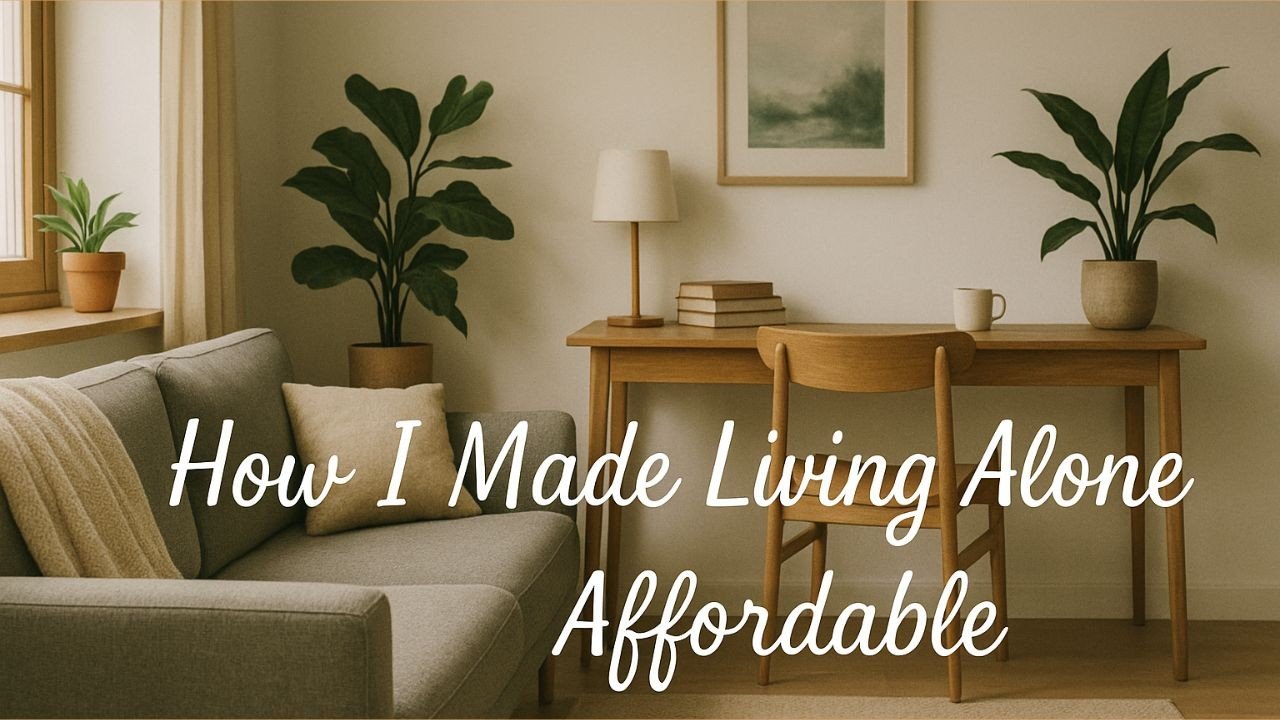How to afford living alone was the biggest question on my mind when I decided to move out on my own. I was excited about having a place that was entirely mine—no roommates, no compromises on décor, and no sharing the fridge. But I was also terrified. Could I really manage all the bills without feeling constantly broke?
If you’ve ever looked at rental listings or run the numbers in your head and thought, “Can I actually afford this?”, you’re not alone. The truth is, learning how to afford living alone is possible—but it requires intentional planning, some creativity, and a willingness to make changes.
Here’s the step-by-step roadmap I wish I’d had when I started my solo living journey.
Step 1: How to Afford Living Alone by Knowing Your Numbers
The first and most important step is to know exactly how much money you’re working with. You might think you have a good idea of your finances, but until you see the numbers in writing, it’s easy to underestimate your spending.
Action Steps:
- Track every single expense for a month.
- Categorize spending into needs, wants, and savings.
- Use a free budget template like The Solo Nest’s Budget & Basics Kit to see the full picture.
When I did this, I realized I was spending over $150 a month on coffee and takeout lunches. Cutting that back freed up a significant amount of cash right away.
Step 2: Rethink Housing Costs
Rent will likely be your single biggest expense when living alone. To make it manageable:
- Look for smaller apartments in safe neighborhoods.
- Choose older buildings with charm instead of high-priced luxury units.
- Negotiate with your landlord for a lower rent in exchange for signing a longer lease.
When I downsized to a slightly smaller apartment across town, my rent dropped by $200 a month—without giving up safety or comfort.
Step 3: Lower Utility Bills When Living Alone
When you live alone, every utility bill has your name on it. That means you have complete control over how much you use.
Money-Saving Tips:
- Swap all lightbulbs to LED.
- Unplug electronics you’re not using to prevent “phantom” energy drain.
- Run appliances during off-peak hours.
- Shop around for cheaper internet or energy providers.
A single phone call to switch internet companies saved me $30 a month.
Step 4: Be Strategic with Groceries
Food is another area where living alone can get expensive—especially if you’re buying portions meant for families.
Practical Tips:
- Plan meals for the week and buy only what you’ll actually use.
- Cook in batches and freeze leftovers for easy dinners.
- Build meals around versatile ingredients like rice, pasta, eggs, and seasonal vegetables.
- Try one “pantry challenge” week each month to use up what you already have.
Batch cooking one big pot of soup on Sunday kept me from overspending and made weeknight dinners stress-free.
Step 5: Cut Recurring Expenses
One of the easiest ways to afford living alone is to stop paying for things you barely use.
Check your bank statement for:
- Streaming services you watch less than once a month.
- Gym memberships you rarely use.
- Auto-renewing app subscriptions.
I canceled three unused subscriptions and saved $40 a month without even feeling the loss.
💰 Ready to Master Solo Living Finances?
Get the complete roadmap to budgeting, saving, and thriving on your own with our in-depth resource: The Solo Living Budget Guide.
👉 Check Out the Guide NowAffiliate disclosure: This link may earn a small commission at no extra cost to you.
Step 6: Find Extra Income Streams
If you’ve already cut expenses but still need more breathing room, consider adding a small side hustle.
- Freelance work like writing, graphic design, or social media management.
- Selling items you no longer use on Facebook Marketplace or eBay.
- Offering pet sitting, tutoring, or rideshare driving in your spare time.
Even an extra $100 a month can make a big difference in your budget.
Step 7: Build a Small Emergency Fund
Living alone means you’re your own backup plan. Even saving $20 a week can create a cushion for unexpected expenses like car repairs or medical bills.
Think of it as buying yourself peace of mind—because when an emergency hits, you won’t have to put it on a credit card.
Step 8: Use Community Resources to Save Money
Local communities often have free or low-cost resources that can help you save:
- Public libraries with free books, movies, and workshops.
- Community centers with low-cost fitness classes.
- Freecycle or Buy Nothing groups for furniture and household items.
When I first moved out, I furnished my living room almost entirely from free listings—saving hundreds of dollars.
The Bottom Line on How to Afford Living Alone
Affording to live alone isn’t just about cutting costs—it’s about making conscious choices. Every dollar you save is a step toward independence, peace of mind, and enjoying the freedom of your own space.
If you want to start strong, grab The Solo Nest’s Budget & Basics Kit. It’s designed to help you understand your money, plan ahead, and feel confident that you really can afford living alone.
